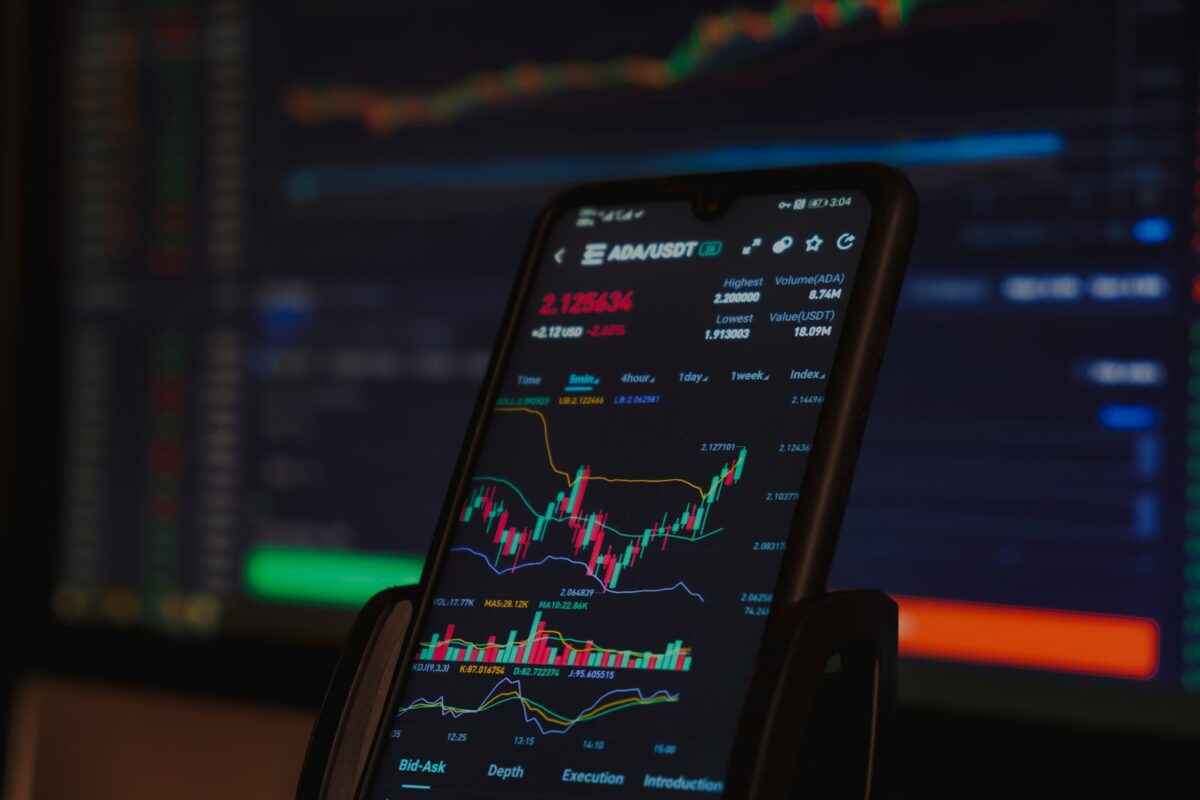
Crypto vs real estate

Investment in blockchain-based tokens offers unparalleled liquidity, enabling asset holders to buy or sell within seconds on global markets. This contrasts with physical property acquisition, where transaction times often extend over weeks or months due to legal processes and financing arrangements.
The tangible nature of traditional holdings provides intrinsic value through physical utility and location-specific demand. However, returns from such properties tend to be gradual and influenced by maintenance costs, taxes, and market cycles. Conversely, tokenized assets exhibit higher volatility but can deliver exponential growth within shorter periods.
A thorough comparison reveals that while immovable holdings guarantee stability and predictable cash flows via rent or lease agreements, digital investments present opportunities for portfolio diversification with fractional ownership models. Evaluating risk tolerance alongside goals for liquidity and yield is critical when choosing between these two asset classes.
Getting Started: Digital Assets Versus Tangible Property
For initial allocation of funds, consider the distinct characteristics of physical property and blockchain-based assets. Traditional property offers tangible value with potential for steady returns, often linked to location and market demand. However, such investments involve lower liquidity, as selling a physical asset can take weeks or months depending on market conditions.
Conversely, blockchain-derived tokens present a highly liquid form of investment due to 24/7 global trading on various exchanges. This immediate tradability facilitates quick portfolio adjustments but introduces significant price volatility and higher risk. Understanding these dynamics is essential before committing capital.
The Nature of Asset Ownership and Risk Profiles
Ownership in real property implies direct possession of a concrete item–land or building–creating inherent security against total loss barring catastrophic events. Such holdings typically deliver moderate returns through rental income and appreciation over time but require active management and maintenance expenses.
On the other hand, digital tokens represent fractional ownership or rights encoded cryptographically on decentralized ledgers. This form reduces entry barriers but exposes investors to smart contract vulnerabilities, regulatory uncertainties, and potential market manipulation. Risk assessment must incorporate technical audits alongside traditional financial analysis.
Liquidity and Market Accessibility Considerations
- Tangible assets: Selling property involves legal processes, appraisal, and transaction fees that delay exit strategies.
- Blockchain-based assets: Can be traded instantly worldwide without intermediaries, enabling rapid shifts in investment strategy.
This difference affects portfolio diversification tactics; liquidity constraints in physical holdings necessitate longer-term perspectives compared to the agile nature of tokenized alternatives.
Diversification Through Hybrid Investment Models
An experimental approach involves integrating both asset classes within one portfolio to balance stability with growth potential. For example, allocating 60% toward physical holdings ensures baseline cash flow from rents while dedicating 40% to digital tokens captures speculative upside tied to emerging technologies.
Evolving Regulatory Frameworks Impacting Investments
The compliance landscape differs markedly between conventional properties governed by well-established laws and blockchain-based instruments still undergoing classification by authorities worldwide. Investors should monitor regulatory updates closely since sudden policy shifts can affect valuation and transferability.
A methodical evaluation combining technical due diligence with legal consultation enhances decision quality when choosing between these contrasting forms of capital deployment.
Tactical Steps for Initial Engagement With Both Markets
- Select target geographic regions demonstrating stable economic indicators for physical acquisitions–metrics like employment rate and infrastructure development influence future yield projections.
- Create accounts on regulated exchanges supporting diverse blockchain assets with transparent fee structures; prioritize platforms offering detailed project audits.
- Diversify within each category: mix residential properties in different cities alongside multiple tokenized projects across sectors such as DeFi or NFTs to mitigate sector-specific risks.
- Avoid overconcentration by limiting exposure per single asset; continuous rebalancing based on volatility assessments maintains portfolio resilience.
- Pursue educational resources focusing on smart contract mechanics alongside traditional appraisal techniques to build comprehensive expertise.
- Evolve strategy iteratively using data analytics tools that track performance metrics including internal rate of return (IRR), cash-on-cash returns for physical holdings, and token price fluctuations over defined periods.
This structured experimentation fosters deeper understanding while progressively refining investment acumen across both domains of tangible property and blockchain-enabled assets.
Evaluating Initial Investment Costs
Assessing the upfront capital required for acquiring blockchain-based tokens versus physical property reveals significant disparities in entry barriers. Investment in tokenized assets often demands substantially lower initial outlay, sometimes as little as a few dollars or euros, depending on market liquidity and platform fees. Conversely, purchasing tangible holdings typically involves considerable sums due to acquisition costs, transaction taxes, legal fees, and maintenance expenses.
Liquidity plays a pivotal role when comparing these two asset classes at the investment stage. Blockchain-backed instruments usually offer enhanced liquidity, allowing investors to enter positions swiftly and with minimal friction. Physical holdings lack this flexibility; the process from negotiation to final transfer can extend weeks or months, inflating initial costs through ongoing carrying charges such as insurance and taxes.
Transaction Fees and Hidden Expenses
Entry expenses for cryptographic tokens include network gas fees, exchange commissions, and occasional slippage during trade execution. These costs fluctuate with blockchain congestion and trading volume but generally remain lower than traditional brokerage fees associated with property deals. Real-world asset acquisition incurs additional outlays: appraisal services, notary public charges, registration duties, and sometimes broker commissions that cumulatively increase financial commitment.
Risk assessment at the point of purchase must incorporate potential volatility-induced cost variances inherent in decentralized assets. For example, sudden price swings can affect the effective cost basis within minutes post-transaction. In contrast, physical holdings exhibit more stable pricing structures but expose investors to geographic market fluctuations and regulatory shifts impacting valuation.
Comparative Returns Relative to Investment Scale
An analytical comparison highlights that smaller-scale capital injections into distributed ledger assets may yield proportional returns faster due to compounding effects in highly liquid markets. However, these gains come with amplified exposure to systemic risk variables unique to digital ecosystems. Property investments usually require larger principal amounts yet provide more predictable income streams through rental yields or appreciation tied closely to macroeconomic factors.
The Role of Regulatory Frameworks in Cost Evaluation
Differing jurisdictional regulations significantly influence upfront expenditures across asset types. Cryptographic holdings face evolving compliance landscapes affecting KYC/AML procedures which might impose identity verification costs but rarely impact base investment size directly. Physical acquisitions encounter complex zoning laws and property-specific taxation regimes that inflate initial financial requirements unpredictably.
This invites experimental approaches where investors simulate various regulatory scenarios using computational models or historical data analysis to forecast cost impacts before committing funds. Such methodologies enhance understanding of risk-adjusted entry strategies applicable across both sectors while fostering critical evaluation skills necessary for informed decision-making under uncertainty.
Assessing Market Volatility Risks
To manage volatility risk effectively, one must evaluate the liquidity profiles of both blockchain-based assets and physical property holdings. Cryptocurrencies exhibit high liquidity with transactions occurring 24/7 across multiple exchanges, enabling swift entry and exit. However, this same liquidity often leads to rapid price swings influenced by speculative trading, regulatory news, or network upgrades. In contrast, tangible property markets demonstrate lower liquidity; sales can take months due to legal processes and physical inspections. This illiquidity reduces short-term price fluctuations but introduces challenges in quickly reallocating capital during market stress.
The difference in returns between tokenized assets and traditional holdings also reflects their volatility characteristics. Digital financial instruments frequently show pronounced daily percentage changes – for example, some altcoins have recorded intraday swings exceeding 20%. Meanwhile, properties generally appreciate steadily over years, buffered by local economic factors and demand-supply dynamics. This stability stems from the asset’s inherent tangibility and utility value as shelter or commercial space. Investors must weigh the potential for higher short-term gains against the unpredictability that accompanies digital tokens.
Risk Quantification Through Comparative Metrics
Volatility measurement tools such as standard deviation and Value at Risk (VaR) reveal distinct risk profiles. A study examining a diversified portfolio including cryptocurrencies and physical holdings found that annualized volatility for crypto-assets ranged between 60-120%, whereas residential properties averaged below 10%. Furthermore, liquidity-adjusted VaR calculations indicate that sudden market shocks produce sharper drawdowns in blockchain-related investments due to leveraged positions and margin calls common on digital platforms. Conversely, real property values tend to respond more gradually to macroeconomic stressors like interest rate changes or employment trends.
Experimental analyses suggest investors should employ mixed strategies combining both asset types to optimize risk-adjusted returns. For instance, incorporating a modest allocation of volatile tokens into a predominantly tangible asset portfolio can enhance overall performance while limiting exposure to extreme fluctuations. Additionally, monitoring on-chain metrics such as transaction volume alongside traditional indicators like occupancy rates may provide earlier signals of systemic shifts affecting either domain. Continuous research into cross-market correlations remains vital for refining investment methodologies grounded in empirical evidence.
Understanding Legal Requirements
Compliance with jurisdiction-specific regulations remains a fundamental pillar in securing both tangible property and blockchain-based assets. Regulatory frameworks for physical asset acquisition necessitate thorough due diligence, including title verification and adherence to zoning laws, which mitigates risk by confirming ownership legitimacy. In contrast, tokenized asset investments require conformity with anti-money laundering (AML) policies and securities laws, where failure to comply can result in significant legal penalties or loss of investment.
Liquidity profiles differ substantially between traditional properties and decentralized tokens, influencing the applicable legal constraints. For example, real property transactions often involve protracted contractual obligations and registration processes enforced by governmental agencies. Meanwhile, digital asset exchanges operate under evolving regulatory oversight focused on consumer protection and fraud prevention, demanding investor awareness about platform licensing and operational transparency.
Legal Frameworks Impacting Asset Acquisition
The classification of an asset–whether it is tangible land or a tokenized financial instrument–defines the scope of relevant legislation. Tangible holdings require compliance with property laws that establish rights to use, transfer, or lease the asset. Conversely, blockchain-based assets fall under financial regulations addressing issuance protocols, custody requirements, and smart contract enforceability. Understanding these distinctions aids investors in assessing procedural risks associated with each investment type.
Case studies illustrate divergent regulatory approaches: in many jurisdictions, purchasing immovable property demands notarized contracts registered with local authorities to guarantee public record accuracy. Alternatively, acquiring digital tokens often involves Know Your Customer (KYC) verification steps implemented by custodians or exchanges to align with international financial standards. These procedural differences impact the timeline for securing ownership and influence expected returns based on market accessibility.
- Tangible Assets: Require physical inspection, government-approved documentation, and standardized title transfers.
- Tokenized Instruments: Subject to smart contract auditability, platform compliance checks, and electronic record-keeping.
Risk assessment must incorporate the volatility inherent in programmable assets versus traditional holdings anchored by physical presence. While immovable assets offer relative stability due to their physicality and established legal protections, digital instruments present higher liquidity but are susceptible to regulatory shifts affecting valuation and transferability. Investors should evaluate whether potential returns justify exposure to these differing risk profiles within their portfolios.
An experimental approach involves comparing returns across both categories while monitoring changes in regulatory environments over time. Investigations into how legislative amendments influence investor confidence could reveal patterns guiding future allocation strategies between physical assets and programmable ones. Such research deepens understanding of how legal frameworks shape market dynamics rather than merely dictate transactional protocols.
Choosing Suitable Investment Platforms: A Technical Conclusion
For investors prioritizing tangible asset backing and relatively predictable cash flow, platforms centered on physical property acquisition demonstrate distinct advantages in terms of stability and long-term value preservation. These investments excel in offering steady returns through lease agreements or capital appreciation, albeit at the cost of limited liquidity, given the inherently slower transaction cycles and regulatory complexities associated with asset transfers.
Conversely, platforms operating within the delineated sphere of decentralized finance present unprecedented opportunities for rapid portfolio adjustment, enabled by tokenized ownership and programmable smart contracts. Here, fractionalized stakes enable enhanced liquidity profiles unattainable in conventional holdings, while volatility remains a critical factor influencing short-term performance metrics.
Analytical Comparison and Future Implications
- Tangible vs. Intangible Asset Dynamics: Physical property investments provide measurable collateral value, useful as leverage or credit enhancement. Tokenized assets offer synthetic exposure but require robust consensus mechanisms to ensure authenticity and prevent double-spending.
- Liquidity Trade-offs: Traditional holdings exhibit low turnover speed due to manual settlement processes; blockchain-based platforms facilitate near-instantaneous settlement via atomic swaps and layer-two scaling solutions.
- Return Profiles: Yield curves differ markedly–fixed-income-like rents contrast with speculative capital gains driven by market sentiment in digital asset markets.
- Regulatory and Custodial Frameworks: Compliance layers influence platform selection; hybrid models integrating custodial wallets with escrow smart contracts aim to bridge trust gaps.
The broader impact lies in convergence trends where tokenization protocols increasingly simulate features of physical assets, potentially harmonizing liquidity constraints without sacrificing tangible collateral integrity. Experimental applications such as cross-chain interoperability and decentralized autonomous organizations (DAOs) managing pooled real asset portfolios forecast a paradigm shift toward democratized access combined with algorithmic governance.
This synthesis encourages methodological exploration: How might layered consensus algorithms enhance asset validation? Can predictive analytics optimize allocation between liquid tokens versus illiquid holdings to balance risk-adjusted returns? Such inquiries pave pathways for innovative investment architectures marrying solidity with agility–crucial for adapting to evolving economic conditions while preserving foundational value principles.


